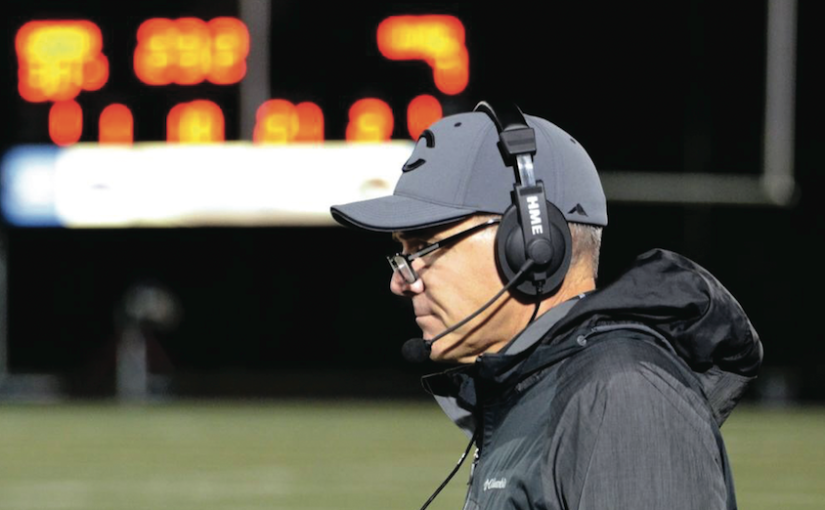Rapid Review: Hudl Sideline Software Allows for Real-Time Review
Scouting has been synonymous with football at every level so long as the game’s existed.
Legendary careers have been built out of football scouting, an ever-evolving field that continues to change at warp speed with technological advances in the 21st century.
When it comes to scouting at the high school level, Hudl is among the most-used software by football programs. Greg Nelson, who’s worked for the company since 2010, has seen its meteoric growth from a platform that roughly 250 high school programs used when he began to some 160,000 teams — in all sports, not just football — across the globe a decade later. Nelson estimated that 98 percent of the roughly 18,000 high school football teams in the country are currently using Hudl, a percentage that holds true across all 50 states. In addition to his role at Hudl, Nelson has been head coach of the Lincoln Lutheran (NE) High School football team for six seasons, guiding the Warriors to a 30-31 record — 29-14 over the last four seasons. He’s seen firsthand how valuable a tool Hudl can be when it comes to self-scouting, including with one of Hudl’s latest endeavors, Hudl Sideline.
In addition to his role at Hudl, Nelson has been head coach of the Lincoln Lutheran (NE) High School football team for six seasons, guiding the Warriors to a 30-31 record — 29-14 over the last four seasons. He’s seen firsthand how valuable a tool Hudl can be when it comes to self-scouting, including with one of Hudl’s latest endeavors, Hudl Sideline.
The service, which is available solely on iOS systems such as iPads and iPhones, is an instant replay software that gives teams the ability to watch the most recent snap in a game within two seconds.
“Normally, Hudl shines after the game, when you’re watching film to prepare for your next opponent, but we wanted to be a factor when teams are playing under the lights,” Nelson said. “That’s when things are most critical for them, so we wanted to build a tool that helps serve them during their games.”
Hudl Sideline was the company’s first foray into a hybrid program that’s both a software and a hardware, Nelson said, as a way to help circumvent potential wireless internet issues in larger stadiums.
“If there is (wireless), there are probably 3,000 other people connecting to it in the stands,” Nelson noted.
Hudl Sideline acts as its own wireless network, enabling the streaming of video from a camera set up in the press box — or end zone — right back down to the sideline.
“I find myself watching it in between plays,” Nelson said. “I’ll call a play, see how it goes. If something goes wrong and I need to see what went wrong before I call the next one, I have the opportunity to watch it.”
Roughly one-third of high school football teams in the U.S. are currently using Hudl Sideline, Nelson said. The service isn’t yet permitted for use at the college level; as such, schools in states which follow NCAA guidelines as opposed to NFHS rules can’t yet use Hudl Sideline. As of 2020, this only applies to Texas, following the defection of Massachusetts to the NFHS system in 2019.
Like other programs in Hudl, the Sideline feature allows you to tag different data points after the game as well. Curious as to which plays you ran every time you faced third down in the game? Hudl Sideline can track that.
In addition to down-and-distance, the feature can track exactly where on the field the play was run from (left hashmark, right hashmark, etc.) and tweak strategies from there.
In-game, the most subtle of details are there for a coach to digest at a moment’s notice. As Nelson noted, he could identify whether or not a player blocking upfront stepped with their correct foot on a play, a seemingly minor detail which could be the difference between a big gain or a stagnant series.
Hudl offers four packages with its Sideline application, with the most basic offering single-camera setups in press boxes. More premium options are available and include streaming kits and technical support, and allow schools to be equipped with two-camera setups — in the press box and end zone.
Much of the work high school coaches are tasked with involves breaking down film after a game on Friday night, a process that can consume the rest of their weekend. Another Hudl platform, Hudl Assist, addresses this issue. Coaches can outsource the breakdowns to Hudl as a means to worry less about data entry and more about practical preparations for next week’s opponent.
“Within a matter of 12 to 24 hours, we’re able to turn around that game with the data they wanted tagged so they can just focus on the reports and the scouting and less about the manual data entry side,” Nelson said.
More than 10 states have already announced that high school football will be played in the spring, if possible, during the 2020-21 academic year due to the ongoing COVID-19 pandemic. But whether or not games are played in certain states, Hudl continues to be an important tool when it comes to recruiting.
» ALSO SEE: Iron Sharpens Iron
Film from previous seasons persists on Hudl and remains available to college coaches, while remote workouts for players in states which are forging ahead this fall can be taped on Hudl as a means to maintain as much social distancing as possible during the season.
Nelson predicted that coaches of teams that aren’t playing in the fall would still be able to have remote film sessions based on the 2019 season via Hudl, too.
“They’ll have the players show some of their workouts and then the coaches will be able to critique them and coach them up when they aren’t able to be there,” Nelson said.





